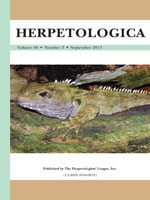The costs of nesting to female animals can be substantial, and may dictate patterns of nest-site choice. In particular, females that travel longer distances to nest likely incur greater energetic costs and may be at greater risk of losing territories to conspecific competitors. We examined patterns of nesting migrations for a population of Tuatara on Stephens Island, New Zealand, over 5 yr. We found that only about 7% of female Tuatara observed nesting in a rookery also lived in that rookery. Of 140 females for which we had both residence and nesting locations, 42% traveled to a nesting rookery from their residential area. The average distance traveled by these females was 84 m, and travel was directed toward the rookery closest to a female's residence area. Our results demonstrate that female Tuatara on Stephens Island minimize the distance traveled on nesting migrations. We suggest that the patterns in nesting travel we observed in this population may be due to natal philopatry of nesting females, or to females minimizing the costs of nesting-related travel.
How to translate text using browser tools
1 September 2013
Patterns of Nesting Migrations in the Tuatara (Sphenodon punctatus), A Colonially Nesting Island Reptile
Jeanine M. Refsnider,
Charles H. Daugherty,
Stephanie S. Godfrey,
Susan N. Keall,
Jennifer A. Moore,
Nicola J. Nelson
ACCESS THE FULL ARTICLE

Herpetologica
Vol. 69 • No. 3
September 2013
Vol. 69 • No. 3
September 2013
New Zealand
reproduction
Rhynchocephalia
Stephens Island




